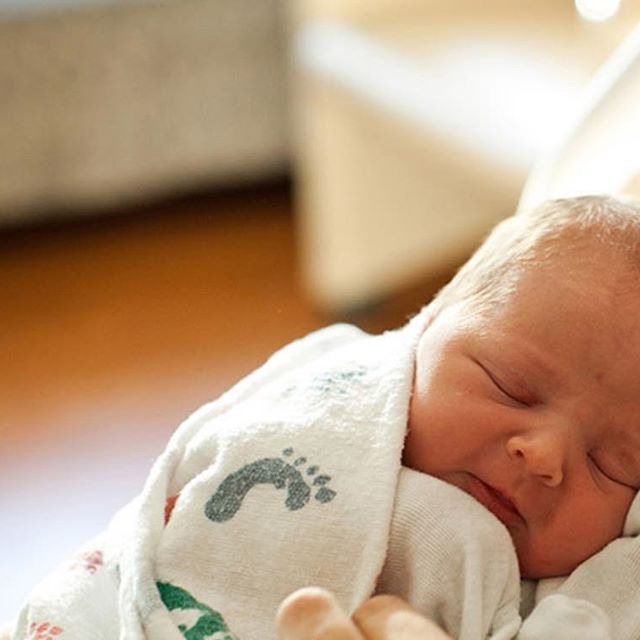
A Little Change for The Diapers, A Big Change for The World | Eco Boom Baby Bamboo Diapers and Wipes Manufacturer
A Little Change for The Diapers, A Big Change for The World | Eco Boom Baby Bamboo Diapers and Wipes Manufacturer

While some infants sleep soundly and don’t need any help drifting off, others struggle to sleep through the night and may need a little guidance.
That’s where sleep training comes in.
Like many aspects of parenting, sleep training can be a challenging process.
This post will provide all of the information you need to help your little one sleep well. We will explain what sleep training is, when it should begin, the four most popular sleep training methods, and five effective tips for helping your little one rest well.
What is Baby Sleep Training?
Sleep training is the process of helping your baby fall asleep on their own and sleep soundly through the night. It’s important to note that sleep training isn’t always necessary. If you’re one of the few parents whose little one has no trouble sleeping, consider yourself lucky! You don’t need to worry about sleep training.
However, most babies will struggle with sleep at some point during the first year of their life. This is completely normal and not a cause for concern. At the same time, it’s something that can be addressed with sleep training.
A crucial safety tip before we move on: remember to always put your baby down to sleep on their back. Never, ever let your little one sleep on their tummy. Also, be sure to remove any pillows, blankets, and toys from your baby’s crib.
When Should Sleep Training Begin?
Sleep training can begin at any time between four and six months of age. Prior to the four-month mark, your baby is too young to develop a circadian rhythm, so sleep training isn’t effective. In other words, for the first four months, your baby will simply sleep when they are tired.
For example, one-month baby may sleep as many as 16 hours per day, and they tend to only stay awake for a few hours at a time. But around four to six months old, your baby has developed enough to begin establishing a sleep cycle. That’s why most experts recommend beginning sleep training some time in that window.
However, just because sleep training can begin between four and six months does not mean that it must begin during that time frame. For some parents, sleep training might not be necessary before their baby hits the eight-month mark, when many babies experience sleep regression.

Three Approaches To Sleep Training
There are different approaches to sleep training, each with their own school of thought. Here are the four most common sleep training methods.
1) No Tears Method
The no-tears sleep training method, as the name suggests, encourages parents to comfort their babies if they begin crying while trying to doze off. So, if you put your little one to bed and they fall asleep without incident, then you’re good to go! No problem.
On the other hand, if your baby begins to fuss when you put them to bed, then you should return to comfort them. This may include holding your baby, rocking them, singing lullabies, or simply rubbing their head as they drift off.
The idea is to reassure your baby until they fall asleep. This will help them to feel loved and allow them to sleep comfortably. This will give your little one peace of mind and eventually give them the ability to fall asleep independently.
The no-tears sleep training method is not without its critics. Some say that constantly comforting your baby will actually prevent them from developing the ability to self-soothe and drift off to sleep alone.
2) Ferber Method
Invented by and named after Dr. Richard Ferber, the director of the Center for Pediatric Sleep Disorders at the Boston Children's Hospital, this sleep training method recommends slowly reducing the amount of comfort you provide your baby with.
At the beginning of sleep training, this method calls for comforting your little one at regular time intervals. Let’s say that you check on your little one every three minutes, talking to them and touching their head, until they doze off.
Then you would slowly increase the time intervals between check-ins. Perhaps you add one minute per week. This allows your child to slowly adjust to soothing themself and falling asleep independently.
3) Fading Parent Method
The third major approach to sleep training is known as the fading parent method. This method is similar to the Ferber method except, rather than reducing the amount of time between check-ins with your baby, you gradually reduce the physical distance at which you provide comfort.
In the beginning, you stand directly over your baby’s crib while they fall asleep. While picking your baby up is not recommended, you may sing to them, hum softly, or rub your little one’s head.
Then, over time, you slowly increase your distance from your baby’s crib. The fading parent method often suggests sitting in a chair close to your baby’s crib and slowly moving the chair away from the crib.
The idea is to slowly work your way toward the door until you are no longer in the room. At that point, if all goes according to plan, your baby will be an independent sleeper.
Four Tips For Baby Sleep Training
Regardless of which sleep training method you use, these four tips will help your little one establish a healthy sleep cycle.
1) Choose A Bedtime And Be Consistent
It’s essential to always put your little one down to bed at the same time every night. Most experts recommend 7:00 p.m. to 8:00 p.m. or somewhere in-between.
2) Create Daytime Activities
Having a busy day full of activities will keep your baby stimulated and allow them to sleep well at night. This can include everything from story time to tummy time.
3) Do What Works Best For Your Baby
The best sleep training method is the one that works for you and your baby. There’s no need to follow one of the established methods if you’ve found something else that’s already working.
4) Be Patient
Many infants experience sleep regression, which is a period of time when their sleep habits change and they aren’t sleeping for as long during the night as they typically do. For example, a baby who once slept for eight uninterrupted hours overnight may begin waking once or twice to feed during that time.
Sleep regression is the result of growth spurts that occur most commonly around six weeks, four months, and six months, but some babies may experience fewer periods of sleep regression, while others experience more. This is perfectly normal. Just be patient and consistent.




No matter which sleep training approach you take, remember to trust your parental instincts and do what seems most effective for your child.
Copyright © 2019 XIAMEN MK HEALTH CARE PRODUCT CO., LTD . | All Rights Reserved
We are here to help you! If you close the chatbox, you will automatically receive a response from us via email. Please be sure to leave your contact details so that we can better assist